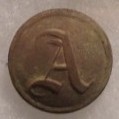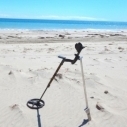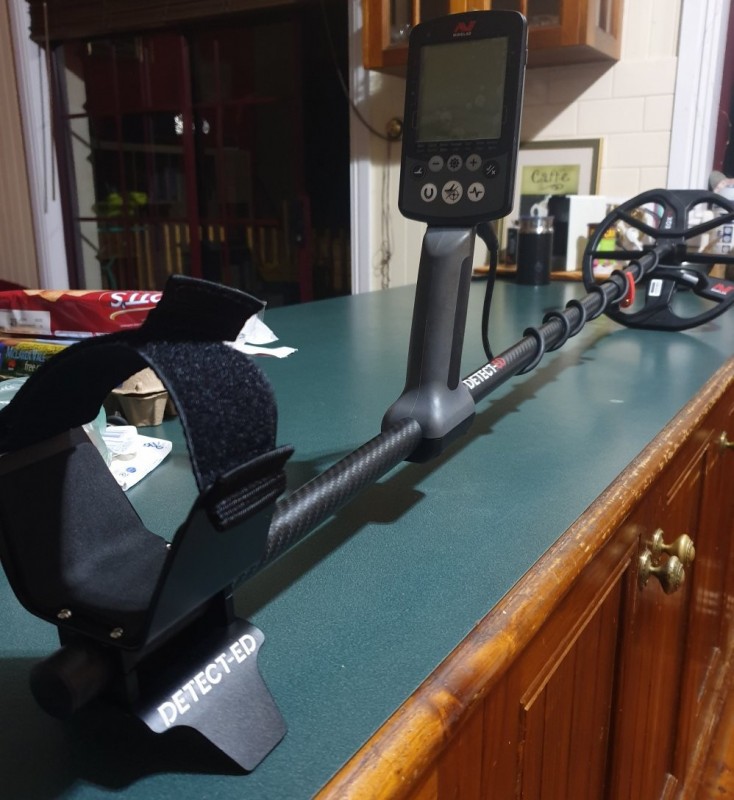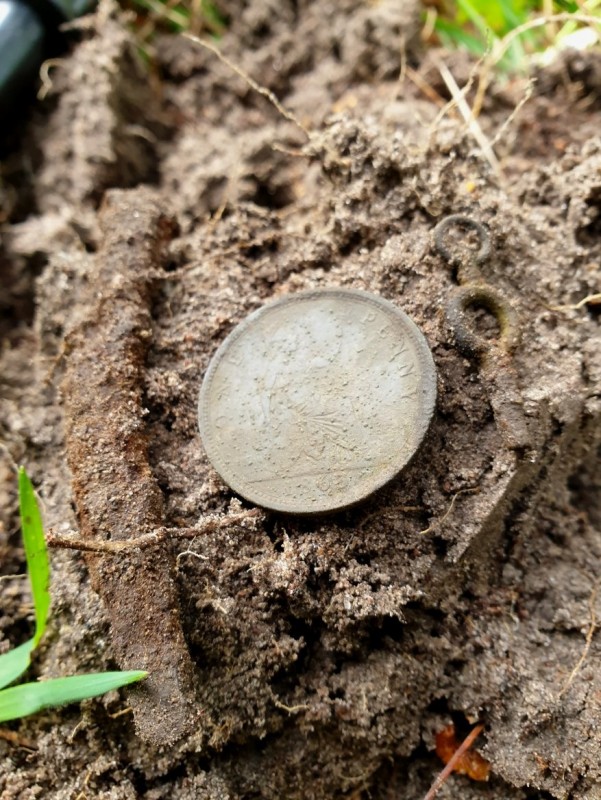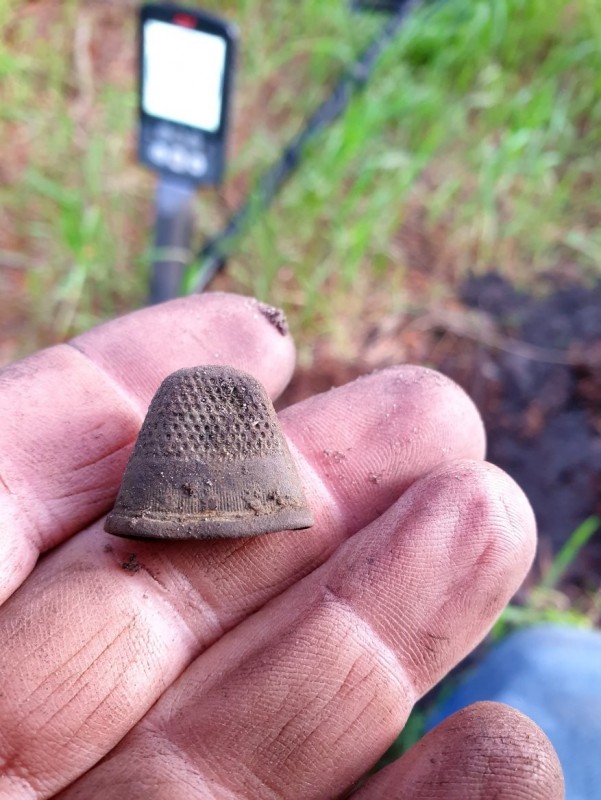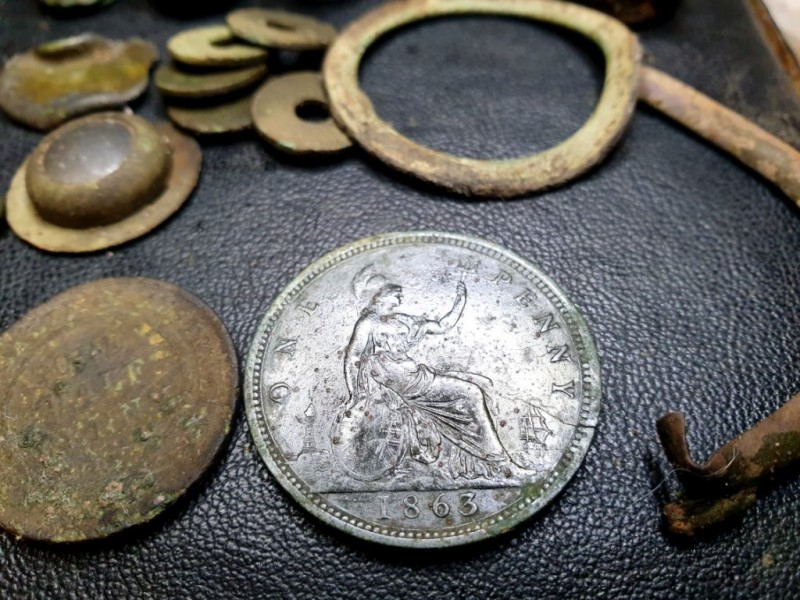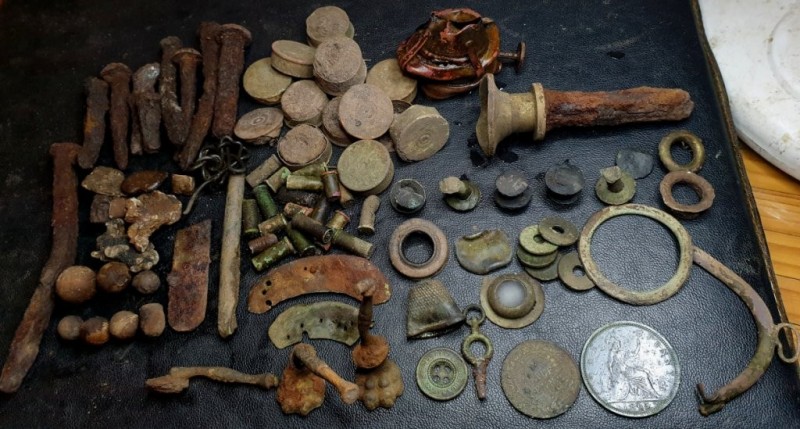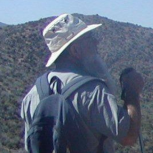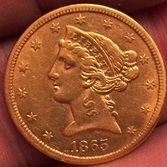Search the Community
Showing results for 'ground balance'.
-
Since I put the 15 inch coil on my 800, I’ve noticed the balance is now NOSE HEAVY....is there a fix to balance it out...ie not be so NOSE HEAVY....??
-
I'm looking to buy my first detector this year, specifically for nugget hunting. After lots of research I'm leaning towards the SDC 2300, but wanted to see if you have other suggestions based on my terrain/conditions. We don't have much public land for detecting because the national forests and state parks don't allow it. But I have access to a private 10 acre property with a creek flowing through it. There was allegedly an old gold mine that was buried decades ago in a neighbouring property, so hopefully it is a good place to work. The ground is covered in lots of organic matter sitting on top of soil heavy in granite and red clay. The creek contains a wide variety of minerals specimens and a good amount of magnetite. So it looks like I'll need to focus on PI machines. Here are my main questions. Will my time be better spent in the creek where the gravels and rocks are exposed, or should I also focus efforts in the higher areas covered in humus? Should I wait for the Fisher Impulse Gold to come out (and prove itself with users) before dropping a few grand on older technology? Does anyone recommend the Garret ATX or any other detector over the SDC 2300 for the area and conditions I'm dealing with?
-
Related question Steve, noticed the OP was on the beach. I was speaking with Minelab repair tech trying to troubleshoot chatty NOX 800 on my Florida Beaches and he mentioned Minelab had disabled the ability to auto or manual ground balance in Beach 1 or 2. The controls still work and it looks like it is doing it but the setting is locked by ML? Can you comment on this for beach mode? Best regards
-
Warm rain on a Noreaster.... The wind chill was very bone chilling but... I poked 6 holes into the lawn in an hour,well with a few trips back inside to warm up ! The ground was totally thawed and the diggin was easy. Final tally , a pull tab , an 80s pepsi bottle screw on cap and a couple pieces of can slaw .... Yaaaaaa Hooooooo ! skuh kuh kuh kuh kuh kuh kuh Got another hour or so till sunset ,hmmmmmmmmmmmmmmmm do I hear Nox music ??????? jim in ma Got your message , but can't seem to reply there today . 10/4 , best kind of hunt is when you know something is there ! I almost hit the beach today but the wind was brutal and decided to wimp out and stay near the heater LOL
-
Hey guys, do the ground balance numbers indicate mineralization? And if so how do the numbers correlate.
-
What techniques do you experienced users have for manual ground balance in areas with hot soil, lots of iron, and lots of EMI? Most of my hunting is in Northern Virginia in areas with hot soil that reads in the 40s or 50s on the Equinox. These spots also have lots of iron and EMI from electric fences, nearby houses, etc. My technique is start with auto noise cancel, then I find a spot with no metal and do a manual ground balance. I also do frequent manual ground balances periodically, especially if when switching from one type of terrain to another. It’s surprising how much the ground balance changes even in different parts of the same field. I found that in my dirt auto ground balance seems to drift, possibly due to the combination of lots of iron, high EMI, and hot soil. Usually my technique works fine, but I find it hard to accurately ground balance when I get close to an EMI source (ground balance numbers sometimes shoot up to 70s or 80s). Usually I move away from the EMI, and also turn down the sensitivity to get an accurate ground balance number. Then I go back to the spot where I want to hunt and turn the sensitivity up as high as I can go without getting too noisy. From what I have read on this forum, ground balance is not much of a concern for Equinox users in areas with mild soil. My experience in my hot soil is that getting an accurate ground balance is key to keeping the machine quiet and finding deep targets. I’ve been using the Equinox 800 with the stock coil for about 2 months and have been very impressed with the results. I used a White’s V3i for about 5 years and after lots of research and experience was able to use it to its fullest potential (found lots of relics and coins). Now I’m going back to the same places and finding more stuff with the Equinox, go figure. One other observation: when I used the V3i, I tried all of the coils available from the manufacturer. I found out that all of the concentric coils were less susceptible to EMI and allowed me to turn gain all the way up with boost on. The double D coils for that machine were way too sensitive to EMI. As I said, I’m finding lots of great stuff in pounded areas with my Equinox and have no complaints at all. However, I do think that a concentric coil would help in high EMI areas. FYI - I usually hunt in Park 2, RD 7-8, IR 0-3. I used Field 2 with the same setting for the first month with great results, but Park 2 seems to lock in on deep signals better. Joe
-
In this article, relic hunter Keith Southern explains how to use the Salinity Balance to “punch” through bad ground, quiet down nail infested areas, recognize big iron and work around it! Enjoy! You cannot Salt balance to iron the way you Salt balance to the soil, not even if it’s a little rusty Sqaure nail. This is because iron is a solid metallic object. However, you can desensitize it some, to work in your favor! Say your on 18Khz and ground balanced. Set to disc -30, sweep around and find some iron in the site like buried nails. Small iron grunts. When you find the nails which should be easy if its a house site, a heavy concentration of them is alway's there. Turn Salt balance on and raise coil up above the nails about a foot, bob coil say from foot to 11 inches above the nails or whatever it takes to barely hear them on the down stroke you want to find where they just start to come in weak. Just a slight wah sound. When it starts to wah pull back up. You want to find that spot above the nails where they are weak .Right where they begin to be seen on down stroke. Start adjusting your salinity balance up a number and push down maybe just an inch but still having to keep maybe a foot above the nails. Go up a number then check with slight push. You’ll eventually find a spot where the nails start to get weaker response. Find the spot on the dial that they are the weakest or even does not report at all on say the slight push towards them.This is the spot you want it at then stop adjusting.You can move back out of the nails and do one more ground grab.then your ready to hunt. You'll still hear the nails as grunts, however they are not gone but they are DESENSITIZED, somewhat to the machine.Think 16 penny nails may look like a 12 penny nail to the machine analogy.Or now, a square nails looks like a finishing nail to it. Maybe not that great but to just give a picture to the minds eye ! Here's what works for me in iron on 18khz for square nails....may or may not work for you in the soil without some tweaking..18Khz, Sensitivity 7,Theshold -2, Black sand off, Salinity about 43, Ground is usually around 800 area. Sweep speed dependent for best results.think CZ speed. Use -30 disc to help on troublesome flip flop or ping pong iron.The machine is very good at ID'ing iron accurately.The tiny small pieces of cut nails may call you out but the -30 disc will let you know its flopping. Bigger iron nails on up are actually quieter than a VLF on falsing. The sonar hit will also tell you its a good target VS a quick sharp ping/chirp of nail false. Sonar hit has that good round feedback sound. What's crazy is you'll get a get sonar hit with no iron buzz but open up the hole and investigate and you'll see alot of nails in hole too with the keeper target. Where as say on your F75 a good hit may be also grunt hit grunt on same target. The Tarsacci isolates the good target and reports only that.Very very quick machine. If it gets a sense of a non ferrous piece it locks on it. Also targets that are somewhat affected by the salinity balance,,,that is, very low conductors. They will seem to ID more by purity than by conductance. Foil for example, to the machine will be different than a good alloy like gold or lead or brass etc. Now say foil, on a vlf reads 2 and a pistol ball reads well on Tarsacci the foil can be fluttery or wavy or disappear And foil reading 2 as the salt balance is neutralizing it but the Pistol ball that reads 2 will slap hard. This is what happens to light iron some of makeup of it is desensitized and the small targets or low conductors jump out better than it can on a VLF where its reading a nail as strong .nail can overtake the pistol ball on VLF but on Tarsacci the nail looks slightly less to the circuit.....SLIGHTLY but in terms of unlocking that's a BIG step. Keith https://forums.tarsaccisales.com/forum/3/using-salt-balance-work-iron
-
Based on my recent experience with micro placer gold, I have a question about Ground Balance. I know Steve has at various times, in previous posts, talked about ground balancing on Multi-Frequency machines, especially as it pertains to beach hunting. I did not realize until today that Park 2 is a fixed ground balance. I did not Ground Balance the machine at all in Park 2, but had used the manual ground balance in Gold 2 to start out, then expected the Tracking Ground Balance to take over. I presume the Manual Ground Balance I did in Gold 2 carried over to Park 2 because it certainly handled some fairly hot ground with no problem. However, I chased a few very faint targets and it seemed like the NOX was tracking them out. I dug out the areas where I first heard the faint targets that NOX subsequently tracked out, and most of them turned out to be pockets of hot grey clay. NOX was clearly doing its job and trying to ignore changing hot ground, but with a Fixed Ground Balance, it shouldn't have been able to do that. Perhaps it can be attributed to the PFM(pure f-ing magic) of Minelab's Multi filters, but if it's more easily explained inquiring minds would like to know.
-
Sorry if this should be two different posts. Both these issues popped up yesterday at the same site. In fact, the front of the property had a section with overhead electrical wires, a sewer drain in the street past the sidewalk, constant chatter in all-metal, and chatter in both Park 1 and Park 2 despite noise reduction and attempts to ground balance (may have been EMF, as chatter reduced away from the lines). I'll return with the 6" coil, but this seems like something proper knowledge of settings could ameliorate. I'm less than 6 months with the Nox. Ground Balance I do better when I ground balance, but what do I do when I can't find a signal free area in all-metal to perform the auto ground balance routine? Should I attempt to manual ground balance? Or set to zero? Working around sidewalks Loud response from sidewalks - sometimes from a foot and a half away all along, or in intervals. I've tried swinging parallel as well as perpendicular. Sometimes the effect is reduced with the 6" coil, but not always enough. Should I be reducing sensitivity? Any general tip for the Nox around sidewalks? Thanks In Advance!
-
Coming from using mainly the XP Deus on many of my local 1800's sites, I purchased an Equinox 600 to compliment the Deus and to see how it would fare over the same sites. Whilst I am still learning the Nox, so far it has impressed on both depth and ability to squeeze some more targets from what is some pretty difficult ground due to iron contamination (plenty of large nails). Of particular interest was how well it does on the mid to low conductors (damned .22 casings), and in one case pulling an 1863 British penny, fob watch winder and a large iron nail from the same hole. Am pretty keen to re-visit many other local sites to see what other surprises the 600 can offer.
-
-
When circumstance allow, I like to go prospecting in Victoria's 'Golden Triangle', one of Australia's nugget hot spots. I use my beach machines, a Tdi Pro and a Tdi Sl Limited Edition. The Pro can be used for prospecting without any real issues, the Tdi Sl is more challenging in this environment. I'm going to focus on my experiences in hot ground, infested with ironstone, hot rocks and heavy mineralization. Not going to focus on depth, power or anything other than what it takes to get the machine to operate smoothly with the correct ground balance. The Pro machine has a hugh advantage, simply by vitue of that course and fine ground balance adjustments but this post is mostly about the Tdi SL. The single turn ground balance on the SL is a pain, it takes a bit of time to get it just right. When the ground is hot the SL requires me to use a smaller coil, mono being the best. Mono coils in my experience are quieter, more stable and much easier to ground balance. Larger folded mono coils, duel field coils and the newer and hotter spiral wound coils all suffer when the ground is very hot, they are noisy and difficult to ground balance with a Tdi Sl. The Tdi Sl with the stock 12 x 7 Miner John folded mono can be balanced but it will transmit more ground noise and be more difficult to ground balance when compared to using a smaller mono coil. Forgive me but I'm going to repeat myself a few times in this post. The smaller the coil the quieter the Tdi Sl will be and easier to ground balance, the reduced 'foot print' helps a lot. The very small 6 x 4 mini Jimmy coil is amazing in its ability to run smoothly and easily ground balance, but is too small to be practical most of the time. In comparison I can use larger mono coils on the Tdi Pro without issue, it has superior ground balancing ability on the goldfields. A Tdi Pro mounted with a 8x6 mono 'Sadie' is my standard setup. The Detech 15 x 10 or Digger 14 x 8 also see some use as does the new to me Detech 8 inch mono when using the Pro. So whilst the Tdi Sl likes the smaller mono coils on the goldfields the larger coils are not an option. Yes the ultimate Tdi Sl setup is a small mono coil and an upgraded 16v battery pack for prospecting. Super light weight and beautifully balanced, respectable performance and versatile. Fun to use for all, kids and older family enjoy the light weight and balance. Allow me to deviate for a moment. Tie me to an ants nest and smother me in honey for stating the obvious. Serious prospectors are better served by more specialised Minelab machines... they are superb. For me versatility is key at the moment and I feel better served by my White's Tdi Pro on the beach, that stealthy little Tdi Sl 'urban PI' is also a pleasure to use. When I invest in an expensive 4x4 and trailer some time in the future, then I'll make room for the more specialised gold machine. Hopefully by then Minelab with have a light weight and well balanced SDC type PI in a Tdi Sl style body. Maybe White's will surprise us all. Fisher is coming to the party also. I need PI peformance and light weight, good balance and sane pricing.. more options arriving as time goes on. Again my one piece of advice to anyone wanting to prospect using a Tdi SL in 'hot' ground, particularly in Australia, is this.. Use a small mono coil. Small duelfield coils like the older Jimmy, 7.5 duelfield, Miner John 7x5 folded mono or 6 inch folded mono coils, are all OK most of the time.. The Razorback 10 x 6 mono is great, the Coiltek Tdi series 6 inch mono is great, The Sadie is great. Keep it small and stick with mono and you should do well in all types of ground. The larger coils work well with the Tdi Sl in moderate soils and the beach. But when the ground goes bad it does pay to swap out for a small mono. Again this is my experience in hot Australian ground. Hot is hot and I suspect many international Tdi Sl users have the same experience in difficult ground. Not looking to pick any fights but this is my experience with the Tdi Sl. Go small, go mono and boost the battery pack. All the best.
- 6 replies
-
- advice and tips
- australia
-
(and 1 more)
Tagged with:
-
I just havent been able to find the sweet spot on my vaquero ground balance the last couple times i used it cant seem to find that constant hum, either to negative or to positive, can someone help me out?
-
Turned my ATX on today and it makes no noise when I pump it to ground balance it. Still makes noise over targets but I don't know if it is ground balanced. Anyone else had this problem?
-
Detected an area that has a history of producing gold including small nuggets -- and have found pickers and larger yet small nuggets in my sluice here in past years with predictable confidence of finding more if put in the energy/ time -- but has a lot of ferrous trash above and below surface, and high mineralization. Experienced difficulty with the GB/ threshold and/or volume of the ATX. Did 4 resets -- factory reset 1st, then a freq scan, and then a GB readjustment, in that order -- trying to achieve a uniform response/ background noise. Detected and dug up nails and trash so it was working. But it was difficult to find the "right" threshold to assure a stable reliable pattern of signaling. At times, despite having just redone the GB, the ATX sounded nonstop -- loud continuous signaling despite having volume set at default (10) and headphones volume barely audible, and also tried with volume set higher and at max volume, with headphones volume adjusted low as could go, as is advised. But had the sensitivity set at the max of 13, not default setting of 10. So maybe that is the cause for the trouble finding its stability sweet spot. IDK Also at times, the very same areas where this incessant signaling occurred then yielded no signal at all -- total silence as if the ATX was switched off. For example, I'd sweep slowly to the left and the voice was loud/ nonstop loud signaling as if the volume was set at max (which it wasn't; volume was set at 10); sweeping back to the right over the same area it would do the same; sweeping further to the right however led to total silence/ not a peep; but then, I swept the area to the left again, and that same area that had had the loud incessant chatter was then totally silent as if the ATX was off. This was a repetitive issue and totally destroyed my confidence in its use. I tried it in water and on land. And regardless of location in that area it was the same pattern. I got so frustrated with it I put it away and got out the shovel, buckets and sluice. GB2 however (used by my wife) found gold minus any of these GB/ threshold issues. On a related note ... I have read (on other forums and websites) that others say the VLF and PI both produce a steady, stable background hum. Not for me. The GB2 has a reliable hum that makes it super easy to detect the faintest shift change. ATX? Not even close. ATX doesn't have a reliable hum at all. ATX hum is virtually impossible to discern distinct from its signaling (hard to know what the hum is, and is supposed to be, versus what is assumed to be a false signaling). Creates a frustrating guessing game.... So, it seems to me the VLF and PI differ markedly in what kind of hum is produced; and the PI absent of such a hum perhaps. So, am wondering do other ATX users find the same thing? Or might the hum/ lack of hum experience differ by type of ground detected -- water versus land; highly mineralized versus low to none; heavily trashed versus negligible ferrous crap littering the subsurface layers, etc. Maybe I just don't grasp the volume/ threshold equation specific to the ATX. Dare I admit it, more often than not, I have trouble setting it to a barely audible threshold/ volume. If I put the ATX volume at max (level 25) and try to adjust the headphones volume to barely audible, it's impossible to get the noise level that low. It's loud. And my hearing isn't even all that great yet the noise remains loud, not barely audible. Volume settings between factory default of 10 and max of 25 just do not allow me to adjust the headphones to barely audible -- the detector's voice remains loud regardless. Countless detectorists on YT videos and forums advise "turning the detector volume to its max and adjust the headphones volume low enough as that the detector's voice/ threshold/ hum/ background is just barely audible, which makes it easy to detect a variance." This is a piece of cake on the GB2. What am I doing wrong on the ATX???
-
I am wanting to know more about the new pat pending XGB ground balance, how is this better than say a standard mxt or old GMT ground balance method? Does it allow more depth than older VLF nugget detectors? Does it smooth out the threshold noticeably. The 50% more voltage to the coil is pretty self explanatory and you can hear the results of that with the super strong target signals the 24K creates on targets.
-
This question has been posted over on Prospecting Australia website. Wondering if the brains trust here might be able to help - OP over there is not getting much response. I've never used a GPX so I'm not much help. If some knowledge can be shared here I'll post the link over on PA and the knowledge will stay here for perpetuity ? Thanks. " Does anyone regularly use Specific Ground Balance? How do you find it? Page 60 of the User Instructions says - When moving to a new area the first Specific Ground Balance must be done with the Ground Balance Switch, not the Quick Track Button. Does this mean you can use the Quick Track Button after you've done the first one? I've never used Specific and wondering whether I should have been. Thanks for your help. Cheers "
-
I"m enjoying considerable success on the beach working in both the dry and wet sand using the default settings beach one. This leads on to my question----do I need to ground balance, either manually or auto ? Some say yes and others say no---why have manual gb when this can be changed to auto gb ? Getting good signals at good depth so why try and fix it if it aint broke .? I do believe that we all try and get the best out of our machines. Mossy99. [ forgot to add---my post not my son aka staffy33 ]
-
Of all the different types of metal detectors, the two box is the oldest(?) but also one of the least used. Defintitely a detector for special situations, but with a couple possible exceptions, for the proper situation it's the best choice for the job. I'm aware of two standalone models still available new -- Fisher Gemini-3 and White's TM808. Garrett's Treasure Hound (see P. 43 of their latest catalog) and apparently a new kid on the block are attachments for specific standard (control unit + shaft + single coil housing) detectors. In particular what has me wondering (and confused) is the fact that the Gemini-3, operating at 81.92 kHz doesn't appear to have a gound balancing adjustment but the TM808 (6.5 kHz) does. I was under the (naive?) impression that low frequencies are less susceptible to ground mineralization but here it seems in practice, it's just the opposite. Any thoughts/explanations?
- 10 replies
-
- detector tech
- fisher detector
-
(and 1 more)
Tagged with:
-
Hi Steve: Just re-read your "Steve's Guide to Threshold, Autotune..." It helped a lot. Thanks. I do have a question though. I understand V/SAT. It's about how fast autotune re-adjusts the threshold after encountering some disturbance like a target. However, I'm unclear on how that relates to Ground Balancing and Tracking. It sounds like they are the same. Would you please explain that? Thanks
-
If you read between the lines on the various search modes, Minelab seems to imply that the ground balancing is done automagically, regardless of whether you do a ground grab or not. For example: Park 1 Multi-IQ processes a lower frequency weighting of the multi-frequency signal, as well as using algorithms that maximise ground balancing for soil, to achieve the best signal to noise ratio. Hence Park 1 is most suited for general detecting and coin hunting. Park 2 Multi-IQ processes a higher frequency weighted multi-frequency signal while ground balancing for soil. Field 1 Multi-IQ processes a lower frequency weighted multi-frequency signal, as well as using algorithms that maximise ground balancing for soil, to achieve the best signal to noise ratio. Hence being most suited for general detecting and coin hunting. Field 2 Multi-IQ processes a higher frequency weighted multifrequency signal while ground balancing for soil. Beach 1 Multi-IQ processes a low frequency weighted multi-frequency signal, and uses special algorithms to maximise ground balancing for salt. Beach 2 MultiIQ processes a very low weighted multi-frequency combination, using the same algorithms as Beach 1 to maximise ground balancing for salt. Not to be confused with auto tracking, but it appears that the Equinox is doing some ground balancing specific to each search mode irregardless of whether you do a ground grab (auto ground balance in EQ speak) or not. Not that I would skip doing a ground grab, but I find it interesting that Minelab seems to be implying they process the ground balancing differently for each search mode, even if you don't do it. Steve do you see this as the case?


